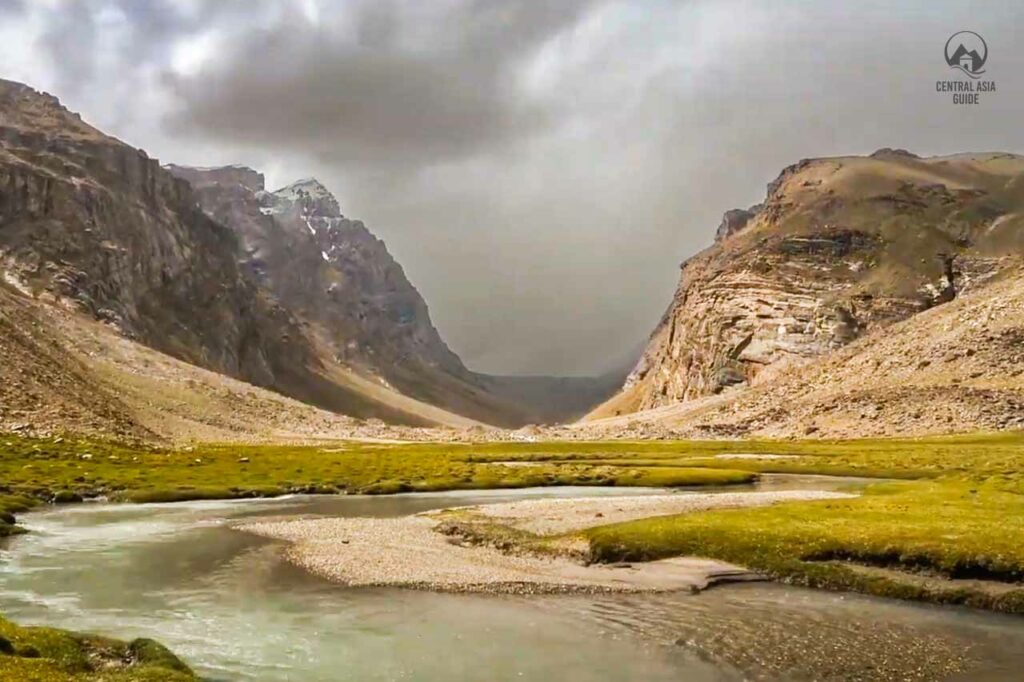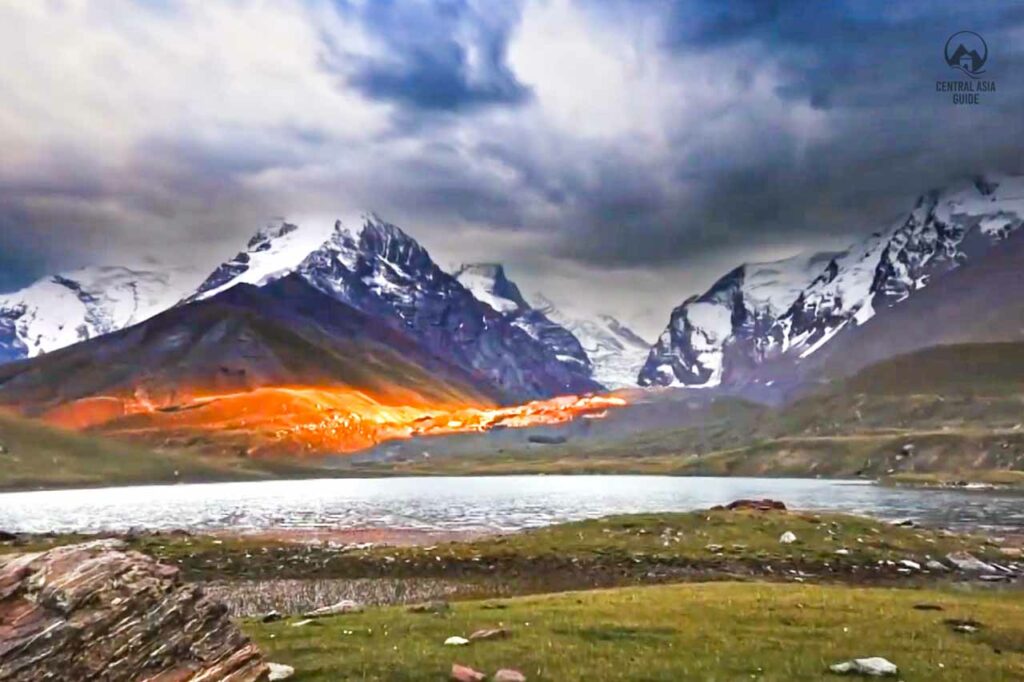Rasht Valley
Rash Valley
The Rasht Valley, also known as the Karategin Valley, is a beautiful yet remote area in eastern Tajikistan, renowned for its unspoiled landscapes and traditional Tajik culture. Situated northeast of Dushanbe, the Rasht Valley lies along the Surkhob River and is bordered by the high peaks of the Pamir-Alay Mountains, giving the valley its dramatic scenery. This strategic location adds an extra layer of complexity and allure for tourists and trekkers looking to explore the region.
The Rasht valley is bordered by the Alay Mountains to the east and is part of the larger Pamir-Alay range, making it a gateway to some of Central Asia’s most remote and beautiful areas. If the border were to open, the valley could quickly become a popular destination, offering a more scenic Pamir Highway loop compared to the extended route via Dushanbe and Khujand. The valley holds a wealth of natural beauty and local color, providing a unique experience of Tajikistan beyond the well-traveled Pamirs.
Once a stronghold for opposition forces during the civil war, and limited by the closed border with Kyrgyzstan, the valley remains underdeveloped and somewhat isolated for tourists. However, this lack of development has preserved the area, making it one of Tajikistan’s lesser-known regions, ripe for discovery.
Rasht valley history
The Rasht Valley has a rich and complex history, shaped by its geographical location and the significant events that have taken place there over centuries. Historically known as the Karotegin Valley, it served as a critical segment of the Silk Road, providing the exchange of goods and ideas across Central Asia. Ancient trade caravans traveled through the valley along the Karotegin route, connecting northern Afghanistan to the city of Kashgar in China. The route began in Hulbuk, a historic city in the region, and followed the river eastward over the Karamyk Pass toward China via the Irkeshtam Pass. This strategic position made the valley a thriving center of commerce and cultural exchange for many centuries.
In the 18th century, the valley was largely inhabited by Kyrgyz people. However, a deadly epidemic struck, drastically reducing the local population, and Tajik settlers from the Bukhara region moved in to repopulate the area. The valley’s population then transitioned to become predominantly Tajik, adding a layer of cultural diversity that remains to this day.
During the Soviet era, the Rasht Valley saw significant developments, including industrialization efforts. However, following the collapse of the Soviet Union, the valley became a focal point during Tajikistan’s civil war (1992–1997). The region, especially around the town of Gharm, became a stronghold for opposition forces, leading to intense and prolonged conflict. This period was marked by violence and upheaval, which left deep scars on the local population and infrastructure. Many families in the valley were affected by the conflict, and remnants of this turbulent time, such as abandoned military equipment and derelict factories, can still be seen today.
Since the end of the civil war, the Rasht Valley has experienced a period of stability and recovery. While the memories of conflict remain, the valley is now considered safe, and it has retained its natural beauty and cultural richness. The region’s history, combined with its scenic landscapes and traditional lifestyle, makes the Rasht Valley a significant and fascinating part of Tajikistan’s heritage.


Rasht valley as a trekking destination
Trekking in the Rasht Valley takes adventurers through deep river gorges, rugged cliffs, and high-altitude summer pastures, known locally as jailoos, where local herders graze their livestock in the summer months. The area is dotted with small, traditional Tajik villages where homestays are common, allowing trekkers to experience the region’s renowned hospitality firsthand. This cultural immersion adds a meaningful dimension to the trek, as visitors can observe traditional ways of life, enjoy home-cooked meals, and perhaps even participate in daily activities like tending to livestock or crafting textiles.
Rasht Valley offers a unique blend of dramatic landscapes, cultural immersion, and historical significance, making it an ideal destination for trekkers seeking an off-the-beaten-path adventure in Tajikistan. Its peaceful, untouched environment and friendly local communities create a trekking experience that is both challenging and deeply rewarding.
Gharm Town
Gharm, the main town in the Rasht Valley, serves as a cultural and historical hub. It played a central role during Tajikistan’s civil war and still holds reminders of this turbulent period, including abandoned factories and former military sites. The town also offers visitors an authentic look at local life, with traditional markets, mosques, and family-owned eateries providing a warm welcome to travelers.
Sights and Destinations near Rasht Valley
Page update 1.11.2024